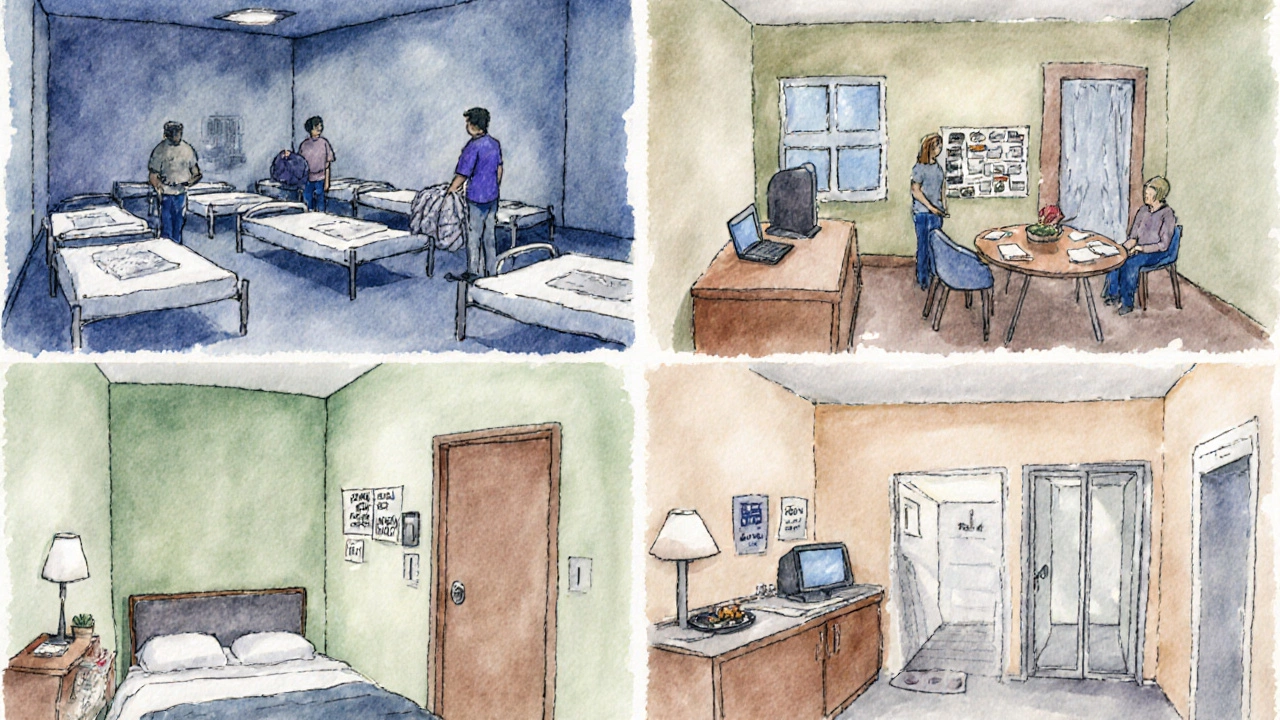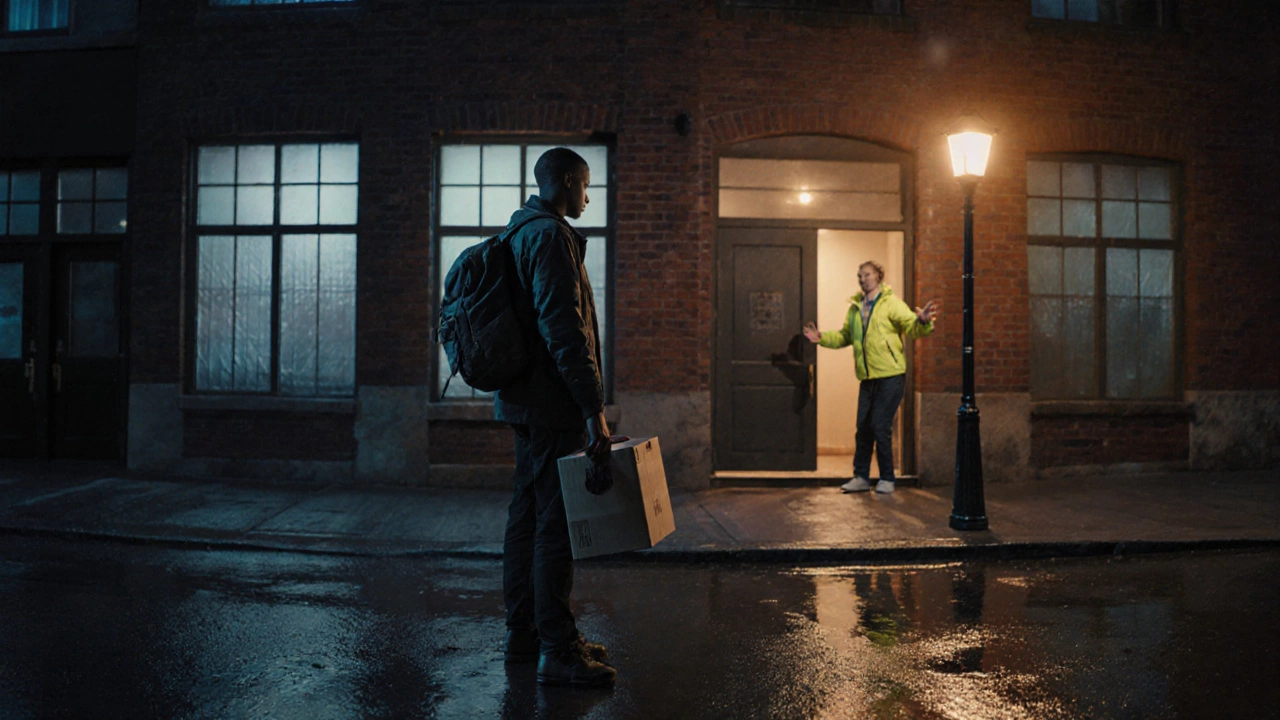Finding a safe place to stay when you’ve lost your home can feel overwhelming, especially if you don’t know what options exist or how to reach them. This guide breaks down the most reliable spots to turn to, from night‑time shelters to short‑term programs that can bridge the gap to permanent housing.
What Counts as a Homeless Shelter?
When searching for help, homeless shelters are public or private facilities that provide temporary sleeping space, meals, and basic services to people without stable housing. They differ from long‑term housing programs, but they’re the first line of defense when you need a roof over your head tonight.
Types of Emergency Accommodation
Understanding the variety of places that count as emergency accommodation helps you match your needs with the right service.
| Type | Typical Stay | Services Offered | Eligibility |
|---|---|---|---|
| Night‑time shelter | One‑night to a few weeks | Beds, meals, case management | Anyone in crisis; often ID not required |
| Transitional housing | 3-24 months | Housing, job training, counseling | Must be working towards permanent housing |
| Rapid rehousing | Up to 12 months | Short‑term rent assistance, support services | Chronically homeless or families |
| Crisis hotel program | Up to 30 days | Private rooms, basic amenities | Usually for families or vulnerable adults |
| Drop‑in center | Daytime only | Food, showers, internet | Open to all, no overnight stay |
Each type serves a specific purpose. Night‑time shelters are great for an immediate bed, while transitional housing offers a more stable stepping‑stone toward independence.
How to Locate the Nearest Shelter
Finding the closest spot starts with three reliable resources:
- National Homelessness Hotline provides 24/7 phone support and can text you the addresses of nearby shelters.
- 211 Service is a free, confidential helpline that connects callers with local emergency housing, food banks, and health services.
- Local Shelter Alliance maintains an online directory of registered shelters in most major cities.
Most smartphone apps (e.g., “Shelter Finder”) pull data from the same databases, but a quick call to 211 often yields the fastest answer when you’re on the street.

Regional Guides: Where to Go in Different Countries
While the overall system is similar worldwide, each country has its own network and funding streams.
United States
In the U.S., the Department of Housing and Urban Development (HUD) funds a Continuum of Care (CoC) program that coordinates shelters, transitional housing, and rapid rehousing across counties. Major cities also run “Crisis hotel” contracts that place families in budget hotels when shelters are full.
United Kingdom
England’s Housing First initiative focuses on getting people into permanent homes first, then providing wrap‑around support. In the meantime, city councils operate “Hostels” that act as night‑time shelters, often managed by charities like The Salvation Army.
New Zealand
In Wellington and other NZ cities, the St. Vincent de Paul Society runs night shelters and offers meals. The government’s Housing First pilots in Auckland and Christchurch provide rapid rehousing vouchers for families and individuals.
Accessing Government Assistance Quickly
Many governments require proof of need before releasing funds, but there are fast‑track routes:
- Call the national emergency helpline (211 in North America, 111 in the UK, 111or 0800561011 in NZ) and ask for “crisis accommodation”.
- Visit a local Drop‑in center with any ID you have; staff can often write a temporary referral for a shelter.
- Ask the shelter’s case manager to submit an emergency voucher on your behalf. Most shelters have partnerships with local housing authorities.
Don’t wait for paperwork you don’t have-most first‑response services accept a birth certificate, a driver’s license, or even a community letter.
Safety & Dignity Tips While Staying in a Shelter
Even a short‑term stay can be stressful. Keep these practical pointers in mind:
- Store your valuables in a waterproof bag and label it with your name.
- Ask staff about lockable lockers; many shelters provide them for a small fee.
- Keep a list of emergency contacts on a piece of paper in your pocket.
- Take advantage of any on‑site health clinics-early medical attention can prevent larger issues.
- Respect the rules (quiet hours, curfew, substance‑free zones) to maintain a positive environment for everyone.
Quick Checklist Before You Leave
- Identify the nearest shelter using 211, a hotline, or an app.
- Gather any form of ID (passport, driver’s license, or a letter from a social worker).
- Pack essentials: change of clothes, personal hygiene items, a reusable water bottle.
- Write down the shelter’s address, phone number, and operating hours.
- Prepare a brief personal story (what led you here, what you need) to help case managers act fast.
Having this info ready can shave hours off the time it takes to get a bed.
When a Shelter Isn’t Enough: Next Steps
If you find that a shelter’s stay limit is too short, consider these follow‑up options:
- Rapid rehousing programs that cover a month or two of rent while you look for work.
- Transitional housing that includes job‑training components.
- Apply for public assistance (e.g., SNAP, Medicaid) to stabilize income while you secure permanent housing.
Most shelters will assign a case manager whose job is to connect you with these longer‑term resources.
Frequently Asked Questions
What should I do if I have no ID at all?
Many shelters accept a birth certificate, a school ID, or even a letter from a community leader. Call the local 211 service-they can direct you to a drop‑in center that will write a temporary ID for you.
Are shelters safe for families with children?
Yes. Most major cities run family‑specific shelters or “Crisis hotel” programs that provide private rooms for families, often with on‑site childcare services.
How long can I stay in a night‑time shelter?
Typical stays range from one night to a few weeks, depending on availability and local policies. If you need longer, ask the case manager about transitional housing.
Can I receive food assistance while staying in a shelter?
Almost all shelters include at least one hot meal per day. Some also run pantry programs where you can pick up groceries.
What if I’m dealing with mental health issues?
Look for shelters that partner with mental‑health clinics. Many have on‑site counselors or can arrange a referral to a community health centre.






